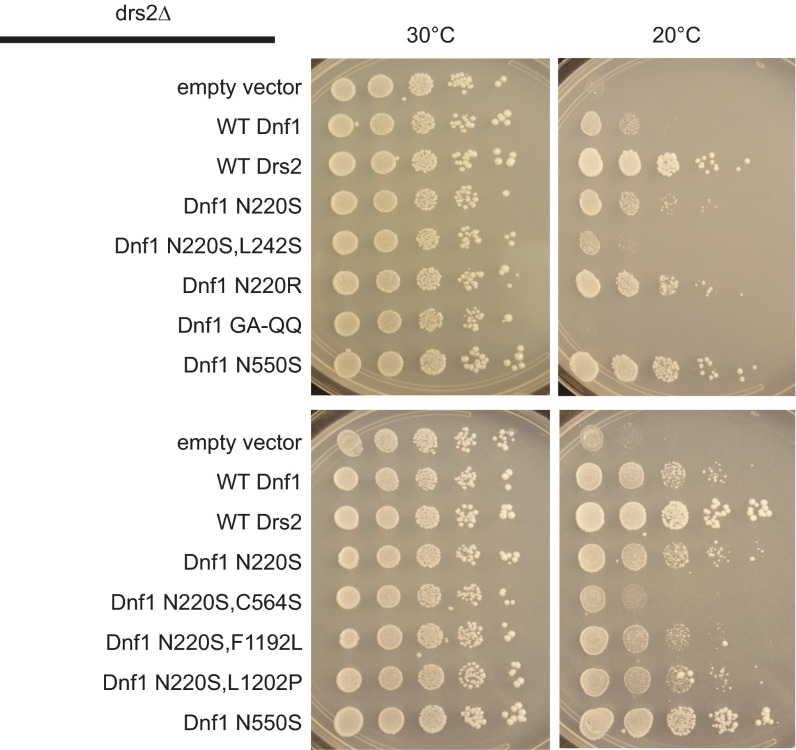Fig. S5.
Substitutions at the N220 position can partially suppress drs2Δ cold sensitivity, implying that this position cooperates with acyl-chain selection of substrate. Plasmids carrying Dnf1 or Drs2 were transformed into a drs2∆ genetic background and grown at 30 °C or 20 °C. drs2∆ cells have been shown to exhibit growth defects at 20 °C, which can be suppressed by expressing WT Drs2 or Dnf1N550S, a Dnf1 mutation that allows the translocation of diacyl-PS across the membrane. The Dnf1GA-QQ mutation is a gain-of-function substitution that allows lyso-PS transport, but not diacyl-PS, and is unable to suppress the drs2∆ growth inhibition. The Dnf1N220S and Dnf1N220R mutations can transport NBD-PS (Fig. 3) and are weakly capable of altering acyl-chain selection. The compound mutants Dnf1N220S,F1192L and Dnf1N220S,L1202P appear to suppress the cold sensitivity as does WT Dnf1. The figures presented are representative images taken from three independent transformants examined from three growth experiments.

